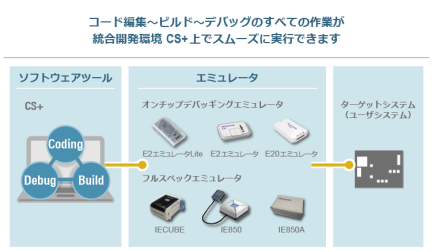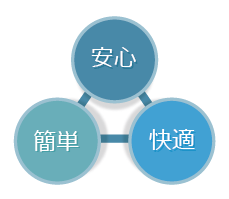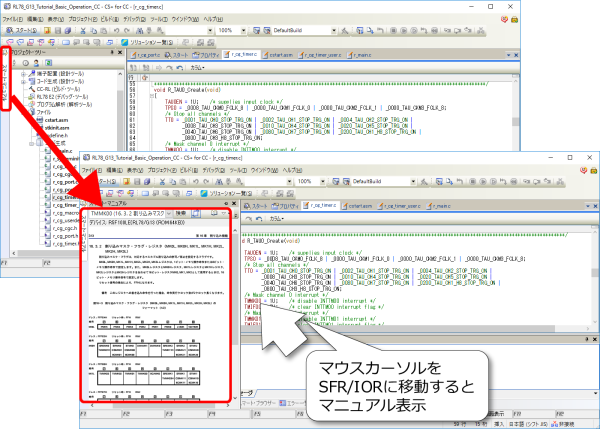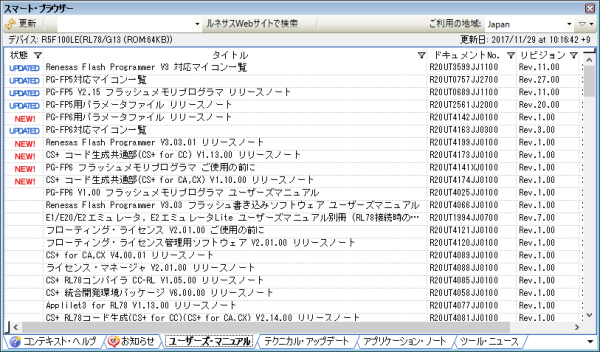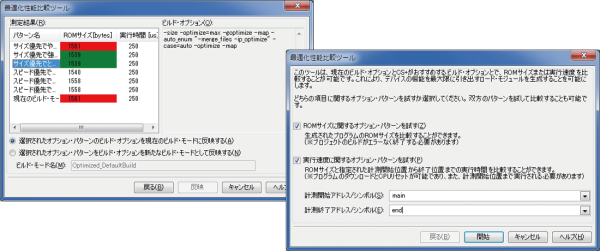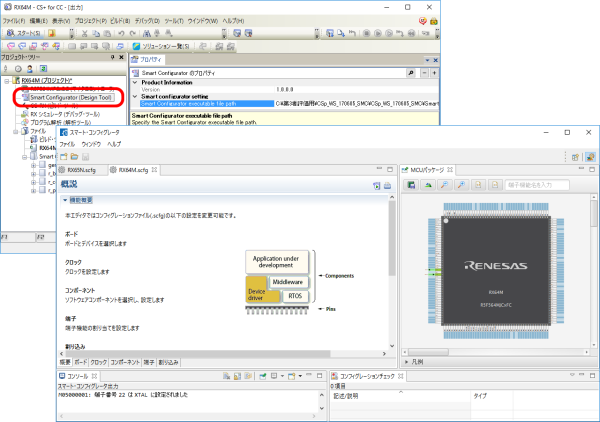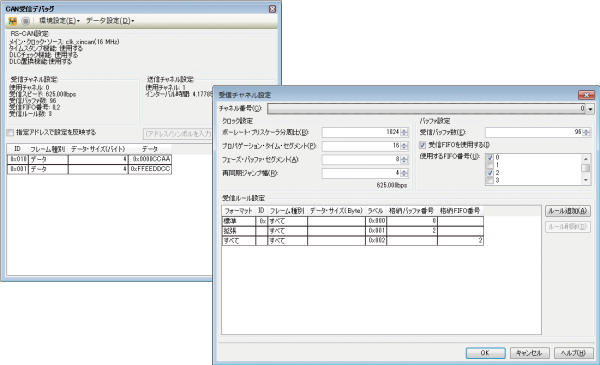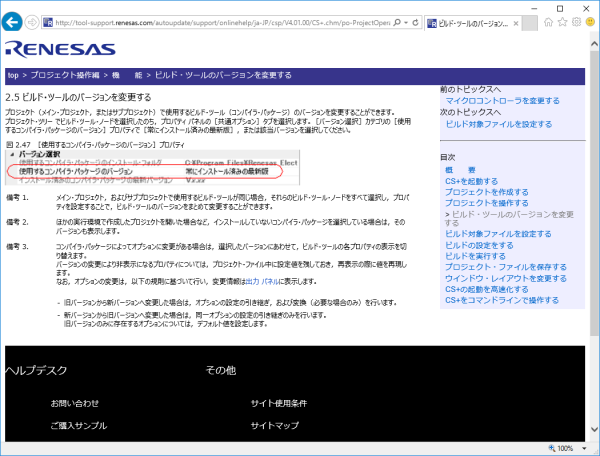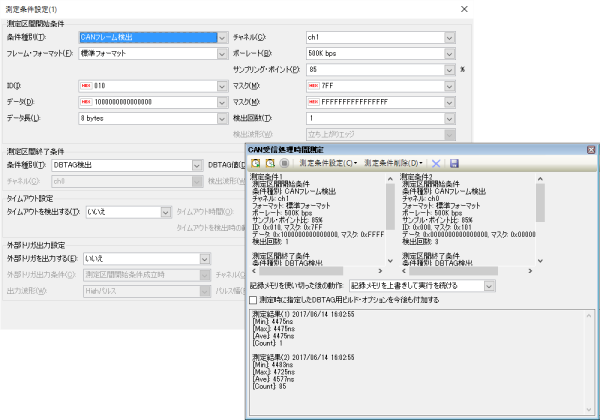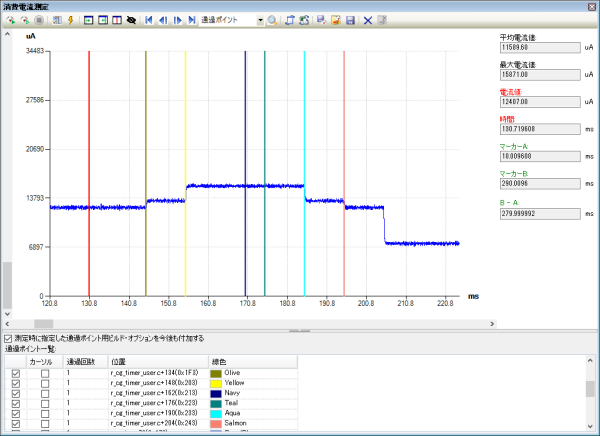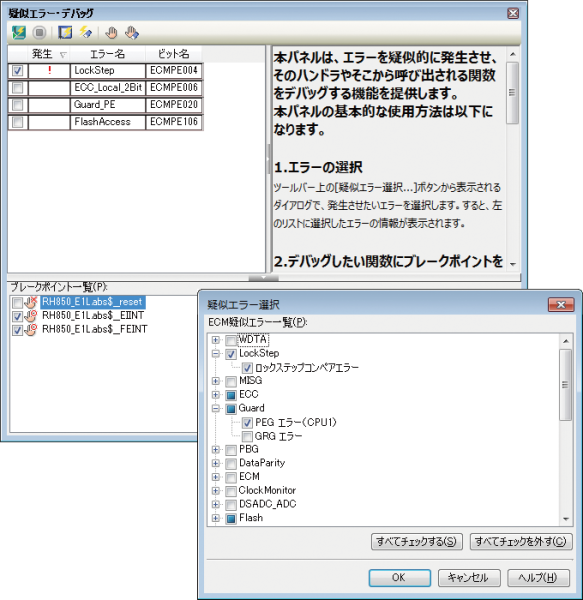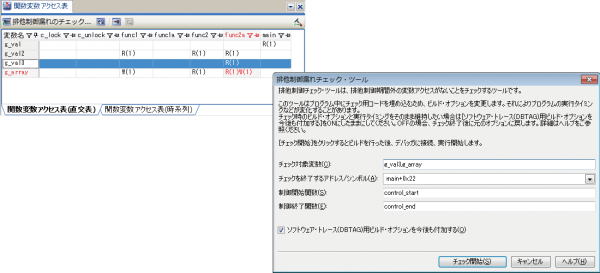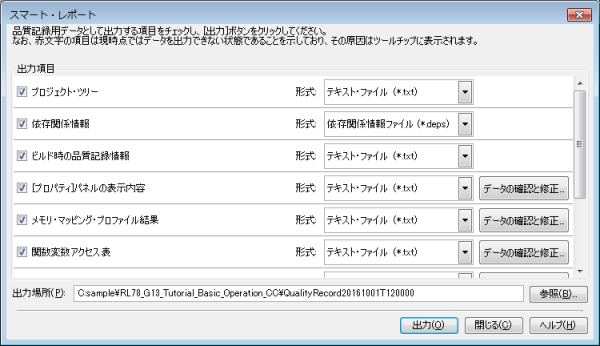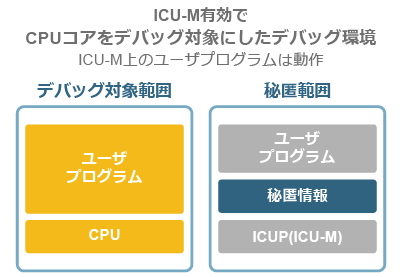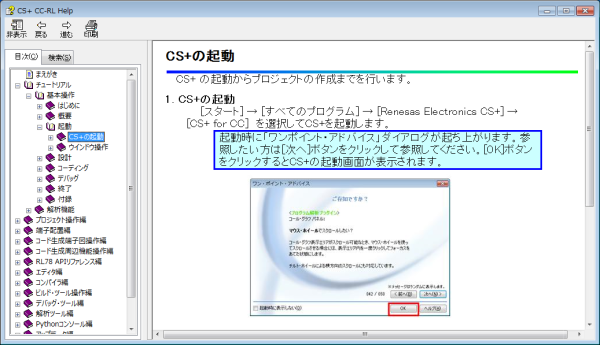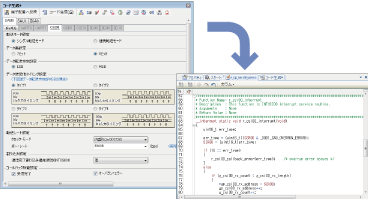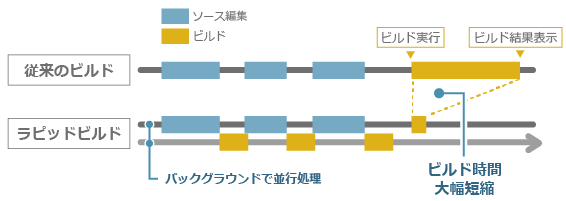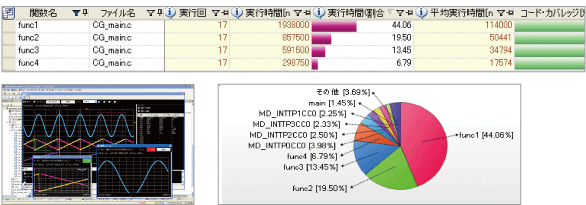概要
説明
【リビジョンアップ】統合開発環境 CS+ for CC V8.13.00 (PDF | English, 日本語)
CS+ for CC V8.13.00リリース。
アップデートの詳細はツールニュースをご確認ください。
CS+は、「簡単」「快適」「安心」を追求した統合開発環境です。
ルネサスマイコンのソフトウェア開発に必要な基本ソフトウェアツールが1回のインストールですぐ使用できる状態になります。オンチップデバッギングエミュレータE2やE2 Liteなどのハードウェアツール(別売)と組み合わせることでより高度なデバッグにも対応可能です。さらに、豊富な拡張機能やユーザサポート機能により、安心してご利用いただけます。
CS+はコンパイラパッケージに含まれます。エミュレータ製品は、CS+と組み合わせることにより全てのデバッガ機能が使えます。
特長
- かんたん: Pythonスクリプト [詳細]
Web上のPythonスクリプトのサンプルを取得し、簡単にプロジェクトに登録/実行 - かんたん: スマート・マニュアル [詳細]
レジスタ説明をエディタ等から即参照でき、 マニュアルを開く手間を省ける - かんたん: スマート・ブラウザー [詳細]
ハードウェアマニュアルからサンプルコードまで直接表示 - かんたん: 最適化性能比較ツール [詳細]
サイズだけではなく実行速度の最適化の効果を比較でき、すぐ設定 - かんたん: スマート・コンフィグレータ連携 [詳細]
ルネサス製ドライバをシステムに簡単に組み込める - かいてき: ネットワーク検証ソリューション [詳細]
[CAN受信デバッグ] 通信のデバッグなのに通信相手いらず - かいてき: オンラインヘルプ [詳細]
最新のヘルプファイルをいつでも参照 - あんしん: CAN通信時間計測ソリューション [詳細]
[CAN受信処理時間測定] CAN通信の応答時間(受信後の処理プログラム開始まで)を測定できます - あんしん: 消費電流チューニングソリューション [詳細]
[消費電流測定] システム電流を測定でき、プログラム動作と消費電流変化の関係を見ることができます - あんしん: 故障注入検証ソリューション [詳細]
[疑似エラー・デバッグ] システムで実現困難な異常状態も起こせます - あんしん: 安全性検証ソリューション [詳細]
[排他制御チェックツール] アクセス禁止区間に変数を変更していないか確認できる - あんしん: スマート・レポート [詳細]
非セキュリティ開発者に対して、セキュリティ情報を秘匿してユーザプログラム開発が可能 - あんしん: メインコアデバッグ [詳細]
非セキュリティ開発者に対して、セキュリティ情報を秘匿してユーザプログラム開発が可能 - Learn More
リリース情報
CS+ コンパイラパッケージ
- 最新Ver.: V8.13.00
- リリース: 2025/01/20
- CS+ for CCの変更履歴| CS+ for CA,CXの変更履歴 | 過去のリリースノート
- バージョンアップ内容 (ツールニュース参照)
- ライセンス情報
- 動作環境
- 対応マイコンごとのコンパイラパッケージ
| 製品名 | 対応コンパイラ | ダウンロード | |
|---|---|---|---|
| 統合開発環境CS+(Note1) | CS+ for CC V8.13.00 | CC-RL/CC-RX/CC-RH | 統合開発環境 CS+ for CC V8.13.00 |
| CS+ for CA,CX V4.09.00 | CA78K/CA78K0R/CA850/CX | 統合開発環境 CS+ for CA,CX V4.09.00 | |
Note
- CS+ for CCとCS+ for CA,CXの2種類のCS+があり、対応するコンパイラが異なります。
統合開発環境 CS+ ユーザ向け情報
コンポーネント単体更新情報、製品版への切り替え、コンパイラのバージョンアップに関する情報などに関しては 統合開発環境 CS+ ユーザ向け情報 をご参照ください。
FAQ
| 内容 |
|---|
| 統合開発環境CS+の便利な機能 |
| 統合開発環境e² studioと統合開発環境CS+の違い |
| 使用するコンパイラのバージョンを変更する方法 |
ターゲットデバイス
ターゲットファミリ
対応デバイスの詳細は、CS+ 対応機能一覧(XLSX) (XLSX | English, 日本語) をご参照ください。
設計・開発
ビデオ&トレーニング
このビデオでは、e² studioのCCコンパイラプロジェクトをCS+ for CCへインポートする方法を紹介します。
関連リソース
詳細情報
かんたん: Pythonスクリプト
Web上のPythonスクリプトのサンプルを取得し、簡単にプロジェクトに登録/実行
Python コンソールで実行可能なスクリプトのサンプルをルネサスWeb サイトから取得し、簡単にプロジェクトに登録して使用することができます(CS+ for CCのみ)。一からスクリプトを作る必要はありません。
- 実行可能なサンプルスクリプトの一覧を確認できます。
- 「プロジェクトに登録」ボタンで、簡単にアクティブプロジェクトにスクリプトファイルを登録できます。
- プロジェクト・ツリーパネルで、取得したスクリプトファイルをダブルクリックすると、スクリプトファイルがエディタ パネルにオープンします。お客様の実現したい内容にスクリプトファイルをカスタマイズすることが可能です。
かんたん: スマート・マニュアル
レジスタ説明をエディタ等から即参照でき、 マニュアルを開く手間を省ける
マウスカーソルを移動させるだけで、 SFR(Special Function Register)/IOR(I/O Register)の説明、コード生成機能で生成するAPI関数の説明を参照することが可能です。(CS+ for CCのみ)(RL78、RXのみ)
対象となるパネルは次のパネルです。
- エディタ パネル
- SFR/IORパネル (レジスタの説明のみ)
- 逆アセンブル パネル (レジスタの説明のみ)
スマート・マニュアル パネル上で、任意のレジスタの説明やハードウェア・マニュアルを表示することも可能です。
かんたん: スマート・ブラウザー
ハードウェアマニュアルからサンプルコードまで直接表示
Webブラウザーを使用することなく、アクティブ・プロジェクトの使用デバイスに関する最新情報の表示、およびアプリケーション・ノートに付属するサンプル・コードのダウンロードが簡単に可能です(CS+ for CCのみ)。
- 新規に登録されたものや、アップデートされたものは、NEWやUPDATEと表示されるので、すぐにわかります。
- エラーダイアログで表示されたエラーに関連するFAQやかふぇルネの投稿などを自動で検索し、問題解決に導きます。
かんたん: 最適化性能比較ツール
サイズだけではなく実行速度の最適化の効果を比較でき、すぐ設定
プログラムの最適化に関するビルドオプションを⾃動的に適⽤し、コードサイズと実行速度がどれくらい向上するのかを比較、設定できます。(CS+ for CCのみ)
- ボタン一つで、複数のビルドオプションのパターンのコードサイズと実行時間を表示することができます。
- 測定した結果は、色付けして表示されるので、コードサイズが小さい設定、実行速度が速い設定を簡単に確認できます。
- オプションパターンを選択して、すぐにプロジェクトに反映することができます。
かんたん: スマート・コンフィグレータ連携
ルネサス製ドライバをシステムに簡単に組み込める
スマート・コンフィグレータは、ドライバの周辺機能設定やミドルウェアの組み込み、端子配置機能を持ったGUIベースのツールです。ルネサスマイコンに最適なソースコードの出力、FITモジュールの組み合わせが可能です。(RXのみ)
V6.00.00でRXファミリのスマート・コンフィグレータとの連携が可能になりました。
- CS+からスマート・コンフィグレータを起動
- スマート・コンフィグレータが生成したファイルをCS+のプロジェクトに追加する
かいてき: ネットワーク検証ソリューション
[CAN受信デバッグ] 通信のデバッグなのに通信相手いらず
RS-CAN のチャネル間通信機能を利用することにより、通信相手の周辺機器がなくてもCAN通信のデバッグができるため、早期にネットワークのデバッグができます。任意のCANチャネル、任意のフレームの受信時のデバッグを行えます。(RS-CANで2チャネル以上必要)(RH850のみ)
- 受信したいデータとチャネルを設定するだけで、プログラムで受信できます。
- 1フレームだけでなく連続フレームを順次送信することが可能です。
- 送信データのインポート/エクスポートが可能なため、テストデータの作成も快適に行えます。
かいてき: オンラインヘルプ
最新のヘルプファイルをいつでも参照
オンライン上のCS+ヘルプの内容を参照できます(CS+ for CCのみ)。
- 最新のヘルプファイルを参照できるようになります。
- お客様の使い慣れたWebブラウザーでヘルプを参照することができ、Web検索でもCS+のヘルプが検索可能になります。
- 従来の、パソコンにインストールされたヘルプファイルを表示する機能も用意しています。
あんしん: CAN通信時間計測ソリューション
[CAN受信処理時間測定] CAN通信の応答時間(受信後の処理プログラム開始まで)を測定できます
高価なCANアナライザを使わずに、 E2エミュレータを使用することで、CAN通信応答時間を測定でき、問題の早期発見に貢献します。(RH850のみ)
- CAN通信において重要な、受信後に処理プログラムが開始されるまでの応答時間を簡単に測定することが可能です。
- 応答時間が設計値に収まらない時に、プログラムを停止させることが可能です。
- プログラム停止後に、トレースデータやCAN通信の履歴を確認することが可能です。
あんしん: 消費電流チューニングソリューション
[消費電流測定] システム電流を測定でき、プログラム動作と消費電流変化の関係を見ることができます
電流計を使わずに、E2エミュレータを使用するだけで、システム電流を測定でき、消費電流のチューニングの作業期間短縮に貢献します。(CS+ for CCのみ)(RL78、RX100、RX200のみ)
- ボード/プログラムの改造をしなくても、システム電流とプログラムの動きの関係を簡単に確認可能です。
- 各種条件により異常電流を検出し、プログラムの停止が可能です。
- ブレークポイント感覚で使用できる通過ポイントにより、プログラム動作と消費電流の変化の関係を見ることが可能です。
これらの機能にはQE for Current Consumptionを使用します。
あんしん: 故障注入検証ソリューション
[疑似エラー・デバッグ] システムで実現困難な異常状態も起こせます
故障注入することで、システム上で発生させることが困難な状態を作り出すことができ、効果的な異常検出時のデバッグを行え安心です。(RH850のECM搭載マイコンのみ)
- マイコンのECCエラーやロックステップエラーなどを疑似的に発生させる事ができ、複数のエラーを同時に発生させるなど様々な故障を注入できます。
- 割り込みベクタ等に簡単にブレークポイントを設定でき、エラー発生後のプログラム動作をデバッグ可能です。
- 各種エラーが発生した場合は、疑似エラー・デバッグ・パネルで確認できます。
あんしん: 安全性検証ソリューション
[排他制御チェックツール] アクセス禁止区間に変数を変更していないか確認できる
特定の区間(例: 割り込み許可区間)に、変数を変更していないかを簡単に検出できます。排他制御が正しく動作しているか確認でき安心です。
- 指定した変数がどの関数からアクセス(読み込み/書き込み)しているか一覧表で確認できます。(CS+ for CCのみ)
- 特定の区間(指定した関数の間)に書き込んだ変数を検出してエラーとして表示します。書き込んだアドレスからソース行にジャンプしてデバッグ可能です。(RH850のみ)(Note1)
Note
- RH850ファミリ用CコンパイラCC-RH V1.04.00以上が必要です。
あんしん: スマート・レポート
品質に関わる情報を一括で出力
プログラムのソース一覧、ビルド・オプション設定、関数と変数の各種情報、カバレッジ率など、品質に関わる情報を一括で出力できます(CS+ for CCのみ)。CS+が提供する様々なレポート機能を使う事で、作成したプログラムの安全性を確認できます。
[出力できる情報]
- プロジェクト・ツリー、依存関係情報、[プロパティ]の表示内容
- ビルド時の品質記録情報
- メモリ・マッピング・プロファイル結果
- 関数一覧、変数一覧、解析グラフ、コール・グラフ、関数変数アクセス表
- コンパイラ評価サービス用ビルド・ツール情報
あんしん: メインコアデバッグ
非セキュリティ開発者に対して、セキュリティ情報を秘匿してユーザプログラム開発が可能
メインコアデバッグ機能を使用すれば、ICU-M上のユーザプログラムを動作させたまま、ICU-M上のユーザプログラムを意識することなく、CPUコア上で動作するユーザプログラムを対象にデバッグを行え、安心です。(RH850のみ)
そのほかの特長
[かんたんコード生成 (Note1)]
マイコン周辺機能(タイマ、UART、A/Dなど)を制御するプログラム(デバイスドライバプログラム)をGUI設定により自動的に生成します。
コード生成のAPIはどの製品でも共通の仕様。だから、一度コード生成機能を使用してプログラムを開発すると、異なるマイコンへ変わった時はデバイスドライバ部分を入れ替えるだけ。そのため、開発工数を大幅に削減。開発者は新しい周辺機能を使うのに集中できます。
生成するプログラムはC言語。初めてマイコンを使う人でも、なぜこの設定なのか、どんな処理をしているのかが一目でわかります。
Note
- 一部のマイコンでは対応していません。
[かいてきビルド]
従来の開発環境ではソースファイルをすべて編集したあと、まとめてビルドを実行する必要があり、ビルド時間がかかる原因になっていました。CS+では、ソースファイルを変更・保存するたびにバックグラウンドで自動的にビルドを実行する「ラピッドビルド機能」を用意し、ビルド時間の大幅短縮を実現しました。
[かいてきデバッグ]
さらに、アドレスのプログラムが実行された際に変数の値を表示する「アクションイベント」機能も搭載。
この機能を使えば右クリックだけで容易に変数表示機能が指定できるため、ビルド操作に時間を費やすことなく快適にデバッグできます。
[見えてあんしん、探せてあんしん]
プログラム実行中の変数値をオシロスコープのようにグラフ表示することができるため、センサアプリケーション等に必要となるアナログ変化を把握しながらプログラム開発を行うことができます。
また、関数の実行時間の割合や、コールグラフによって、負荷の高い処理を探すことができるため、システム全体の性能改善を効率よく進めることができます。
他にも、関数や変数のソート表示、CSV出力、定義/宣言箇所の全検索のような解析機能によって、比較的規模が大きく複雑なプログラム構造であっても、管理やメンテナンスを簡単化することができます。
連携ツール
[CS+対応エミュレータ製品]
CS+では、以下のエミュレータ製品(別売)を使用したデバッグが可能です。
[デバッガ拡張オプション製品]
CS+上で電池管理に必要な各種パラメータを変更可能なプラグインを提供しています。
QE for Battery Management (電池残量管理)
CS+上でリアルタイムOSアプリケーションのタスクレベルデバッグをサポートするデバッガ拡張オプション製品(無償ダウンロード)を提供しています。
[モデルベース開発環境]
CS+とMATLAB®/Simulink®を連携させるツールをご用意しております。
Embedded Target for Renesas CS+ (Processor in the Loop Simulation System) [評価版]
[RH850サイクル精度シミュレータ]
RH850の実機に近い精度で時間計測が可能なサイクル精度シミュレータを、CS+のオプション製品として提供しています。
対応コンパイラ
| 対応マイコン | 製品名 |
|---|---|
| RL78 | RL78ファミリ用Cコンパイラパッケージ |
| RL78、78Kファミリ用Cコンパイラパッケージ | |
| RX | RXファミリ用C/C++コンパイラパッケージ |
| RH850 | RH850ファミリ用Cコンパイラパッケージ |
| V850 | V850ファミリ用Cコンパイラパッケージ |
| 78K0R、78K0 | RL78、78Kファミリ用Cコンパイラパッケージ |
